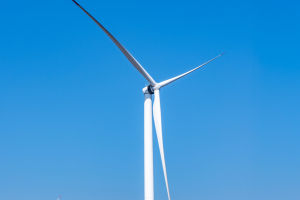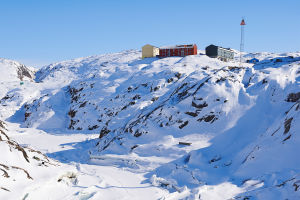You know that gray sidewalk you walk on every day? The one that feels hot in summer and cracks after a hard winter? What if it could do more than just hold your weight—what if it quietly cleaned the air around you?
In Seoul, a team of materials scientists has done exactly that: engineered concrete that doesn't just sit there—it actively absorbs carbon dioxide from the atmosphere. And they're doing it without fancy additives or expensive tech.
How It Works: Turning Concrete Into a Carbon Sponge
Traditional concrete is made by mixing cement, water, and aggregates like sand or gravel. The problem? Cement production alone accounts for about 8% of global CO₂ emissions. But the Seoul team flipped the script by tweaking the curing process—the stage where wet concrete hardens. Instead of just letting it dry in air, they exposed it to controlled streams of CO₂. The gas reacts with calcium compounds in the cement, forming stable minerals like calcite that lock the carbon away permanently.
1. They start with a standard concrete mix but reduce the water-to-cement ratio slightly to create more pores—tiny gaps where CO₂ can seep in.
2. During early curing (within the first 24 hours), they place the concrete in a chamber filled with low-concentration CO₂—around 10–20%, far safer and cheaper than pure gas.
3. Over 6–12 hours, the CO₂ diffuses into the matrix and mineralizes, turning into solid carbonate crystals that actually strengthen the material.
The result? A slab that's not only durable but has already absorbed up to 5% of its weight in CO₂ before it even leaves the factory.
Real-World Applications: Where You'll See It First
This isn't just lab magic—it's already showing up in everyday infrastructure across Seoul. The city's pushing pilot projects that prove carbon-absorbing concrete works outside controlled environments.
Bus stop benches: A dozen stops in the Gangnam district now feature seating made from this new concrete. Each bench absorbs roughly 2 kilograms of CO₂ over its lifetime—small, but multiplied across thousands, it adds up.
Noise barriers along highways: These tall concrete walls, usually bland and functional, are now embedded with CO₂-cured panels. One 100-meter stretch can sequester as much carbon as 15 mature trees in a year.
Public park pavers: In Seoul Forest, pathways use interlocking tiles made with the technology. Rainwater doesn't wash away the carbon—it's locked in mineral form, so it stays put even after decades of foot traffic.
The beauty is that these installations require no maintenance changes. Workers pour and finish the concrete just like before—only the early curing step is different.
How Cities (and Builders) Can Adopt It
You don't need a research grant to use this. The Seoul team designed their method to fit into existing supply chains. Here's how contractors or city planners can get started:
Partner with local precast plants: Many concrete products—like curbs, pipes, or tiles—are made off-site. Ask your supplier if they offer CO₂-cured options. In Seoul, over 30% of precast facilities now have retrofit kits for CO₂ injection.
Adjust curing schedules: Instead of steam-curing (which uses energy and emits CO₂), switch to ambient CO₂ curing. It takes slightly longer, but cuts emissions and boosts compressive strength by up to 10%.
Track and certify carbon uptake: Use simple lab tests—like thermogravimetric analysis—to measure how much CO₂ your concrete absorbed. Seoul's municipal code now allows this data to count toward green building credits.
Even small builders can start with test batches. One Seoul-based startup offers mobile CO₂ curing units that fit in a shipping container—ideal for on-site projects like sidewalks or bike lanes.
Why This Matters Beyond the Lab
Concrete is the most widely used human-made material on Earth. If even a fraction of it could pull carbon from the air instead of pumping it out, the climate impact would be massive. The Seoul approach proves you don't need sci-fi solutions—just smart chemistry applied to something we already build with every day.
Imagine walking down a street where every step you take is on a surface that's quietly healing the atmosphere. That's not a distant dream. It's already happening in Seoul—and with the right choices, it could be coming to your neighborhood next. All it takes is rethinking what concrete can do when we give it a second job: not just to hold us up, but to hold back the tide of carbon.


